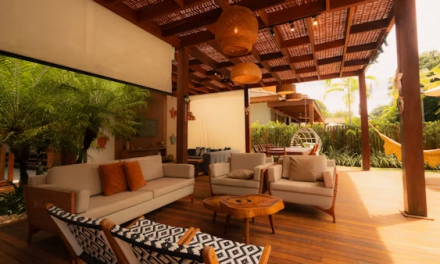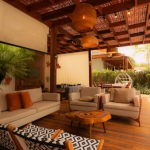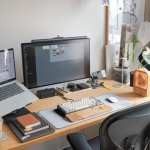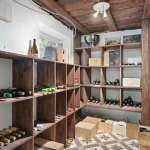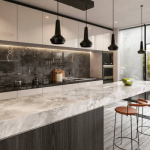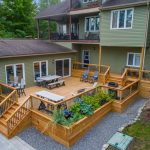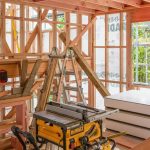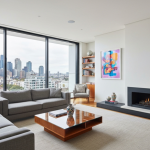Rethinking Urban Homes: How Sydney Custom Cabinets Are Transforming Small-Space Living

In the heart of densely populated cities, the dream of living in a well-designed, uncluttered, and functional home often feels out of reach – especially when your apartment square footage is small. Sydney custom cabinets are quietly helping to rewrite that narrative. Integrated, tailored joinery is emerging not just as a luxury, but as a vital tool in rethinking how we live in tight quarters. In Sydney, where land is scarce and architectural creativity is prized, custom cabinetry is enabling urban homes to feel expansive, efficient, and uniquely expressive.
In this article we explore seven ways that custom cabinetry – especially as practiced in Sydney – can transform small homes. We’ll dive into how layout, materials, multi-functionality, aesthetics, and smart design principles converge to change the way we think (and live) in compact spaces. Whether you live in a city flat, terrace, or micro-apartment, these ideas will inspire you to reimagine your walls as canvases of purpose.
Embracing the “Envelope as Furniture” Mindset
One of the biggest mindset shifts in compact living is to stop seeing cabinets as mere furniture and start seeing them as part of the architecture itself. In many small Sydney homes and apartments, walls can be co-opted to perform multiple duties: structural delineation, storage, lighting, display, even concealing utilities.
By treating cabinets as built-in elements (floor to ceiling, wall to wall), you reduce the footprint of stand-alone furniture. You avoid awkward gaps, floating units, and “dead zones” of unused space. This integration is a core approach of many small-space architects.
In Sydney, skilled cabinetmakers partner early with architects and interior designers so that plumbing, wiring, or structural obstacles can be anticipated and accommodated. The result: a seamless, continuous surface that houses everything from books to appliances to hidden doors.
Using Vertical Height to Your Advantage
When floor space is at a premium, your greatest ally is the vertical dimension. In many affluent areas around Sydney, homes stretch upward before outward. Custom cabinetry thrives here by extending all the way to ceilings, using crown moulding, recessed lighting, and lighting strips to draw the eye upward and visually elongate the room.
Tall, continuous cabinets also serve another purpose: they eliminate dust gaps and awkward top shelves that are hard to reach. In kitchens, laundry spaces, and living walls, stretching up allows for bulk storage (kitchen appliances, seasonal items) up high and everyday items at comfortable levels below.
According to Sydney Cabinet Makers, custom cabinetry can help turn awkward corners and underutilised spaces into efficient storage – particularly valuable in compact kitchens.
The visual effect is powerful: the room feels taller and more generous, rather than choked by cabinetry that ends mid-wall.
Natural Light, Reflective Surfaces, and Strategic Contrast
Small spaces can feel oppressive if lighting is neglected. Custom cabinets give you flexibility: you can integrate glass fronts, mirrored panels, open shelving, or light-reflective lacquers to break up visual mass. These design choices help bounce light around and prevent the cabinetry from feeling like a black void.
In Sydney’s design circles, mixing matte and glossy surfaces is a current trend: contrasting textures can lend depth without clutter. Strategic use of glass or frosted doors allows display areas without compromising storage. Backlighting inside or under cabinets also enhances the sense of layered space.
Another trick: recessing cabinet faces slightly or using shadow lines adds depth and dimension. Some designers even drop in a narrow strip of LED lighting along a cabinet’s horizontal seams, which gives the illusion of floating volumes.
Multifunctional Surfaces and Fold-Out Features
When every square centimetre counts, surfaces must be more than static. Sydney custom cabinets often hide fold-out tables, pull-down desks, murphy beds, or sliding panels behind a sleek façade.
For example: a compact kitchen wall with a fold-down breakfast bar, or a living wall that opens to reveal a workstation. The Dutch, Japanese, and now Australian micro-home trends all emphasise elements that vanish into the background when not in use.
Cabinetmakers design these clever transforms by reinforcing structural components, using robust hinges, and planning utility access. In tight urban apartments, such flexibility becomes a necessity rather than a gimmick.
Custom Cabinets That Respect Flow and Layout
Traditional modular cabinet systems assume rectangular, right-angle rooms. In contrast, many Sydney homes – especially older terraces or infill builds – have quirky corners, angles, and recesses. Off-the-shelf solutions often leave gaps or force inefficient filler pieces.
Custom cabinetry allows you to work around columns, sloping ceilings, radiators, window reveals, and more. Cabinetmakers can adjust panel thicknesses, dowel placements, and joinery to suit odd geometries. This tailored approach preserves circulation paths; you won’t feel boxed in.
And in open-plan homes, custom cabinetry can act as “soft separators” – vertical modules that define zones without closing them off. For instance, a bookshelf cabinet might separate a lounge from a dining area, yet still allow sightlines and light to pass through glass inserts.
Choosing Materials That Work for Compactness
Beyond layout and geometry, the textures and finishes matter deeply in small-space homes. In Sydney, cabinetmakers commonly use lightweight engineered materials, veneer finishes, and durable laminates that respond better to humidity and wear than solid timber in coastal climates.
Engineered boards (with waterproof cores) help reduce warping and can be used in thinner profiles, saving precious depth. A thin but strong panel is better than a bulky, heavy one that shrinks the space. Combining materials – laminate, wood veneer, powdercoat metal – enables contrast and interest without overwhelming the eye.
Hardware choice is crucial, too. Soft-close runners, push-to-open mechanisms, and inglenook catches reduce visible protrusions. In a tight space, even the tiniest knob can feel like visual clutter. Many high-end Sydney cabinetmakers favour integrated finger pulls or hidden channels.
Storytelling Through Joinery – Making Small Homes Feel Big
Perhaps the most significant contribution of custom cabinetry goes beyond utility: it can imbue character, narrative, and scale. Thoughtful joinery can reference architectural motifs, local materials, or artful forms – making a small home feel intentional and curated rather than cramped.
In Sydney’s inner suburbs, one often sees a revival of mid-century timber striping, or using local Tasmanian oak accents, or integrating stone slab tongues for continuity. Cabinetmakers often collaborate with architects so that cabinet lines echo ceiling coffers, floorboards, or external facades. The effect is holistic rather than additive.
Further, well-designed cabinetry encourages restraint. The more confident the built-in canvas, the less you need freestanding pieces. The home becomes a continuous gallery where negative space matters too.
Conclusion: The Future of Compact Urban Living
In cities such as Sydney, where population density, real estate value, and design consciousness converge, small homes are more than a compromise – they can be a statement. By embedding utility, aesthetics, and intelligence into your walls, furniture becomes unnecessary clutter. The shift from “putting furniture into rooms” to “carving rooms with furniture” is under way – and custom joinery is leading the charge.
From rewriting how walls function, to stretching height, manipulating light, enabling transformable surfaces, and guiding flow and storytelling, custom cabinetry redefines what small can feel like. Urban homes no longer have to settle for “just enough” – they can aspire to be elegant, expansive, and deeply personal.

